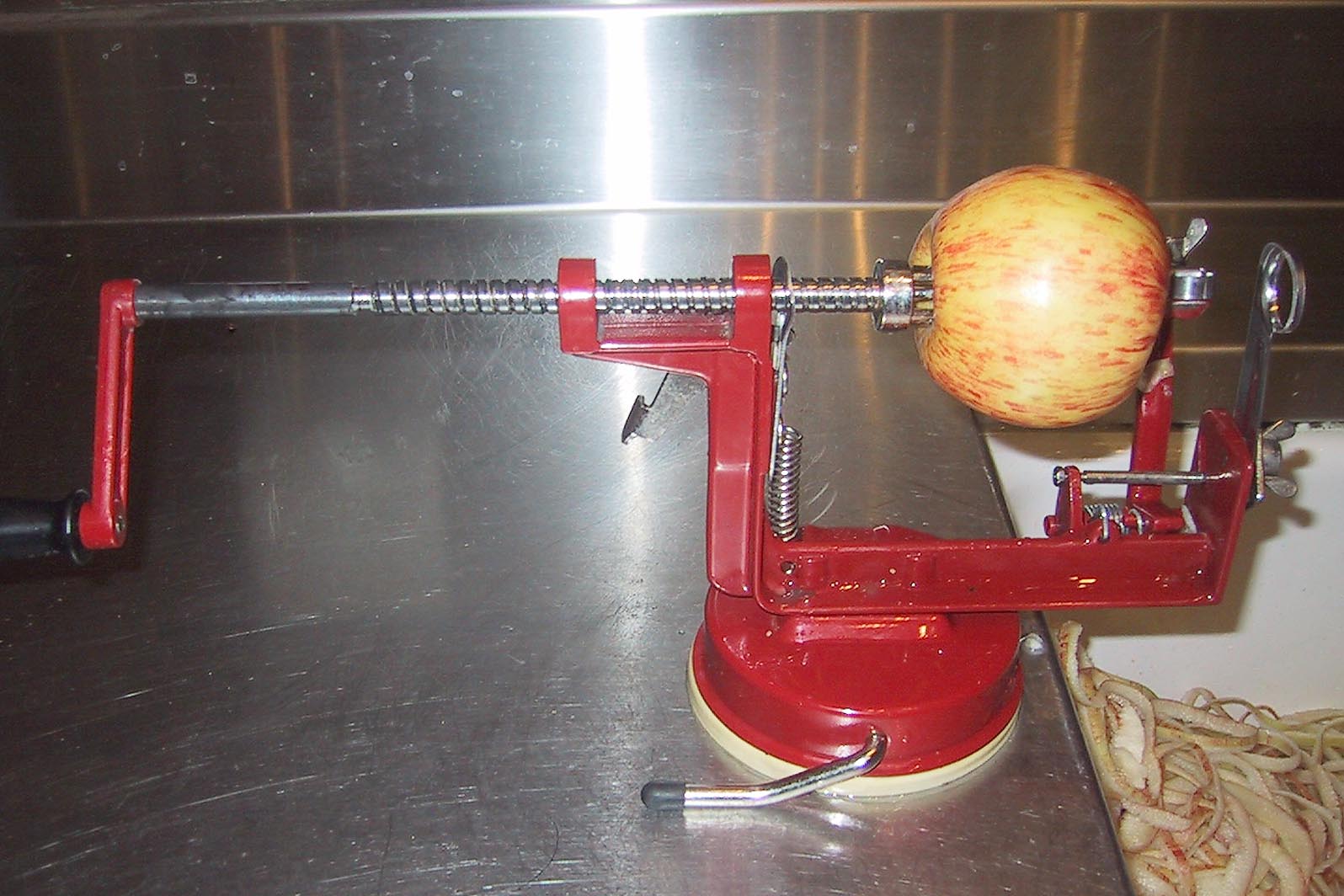
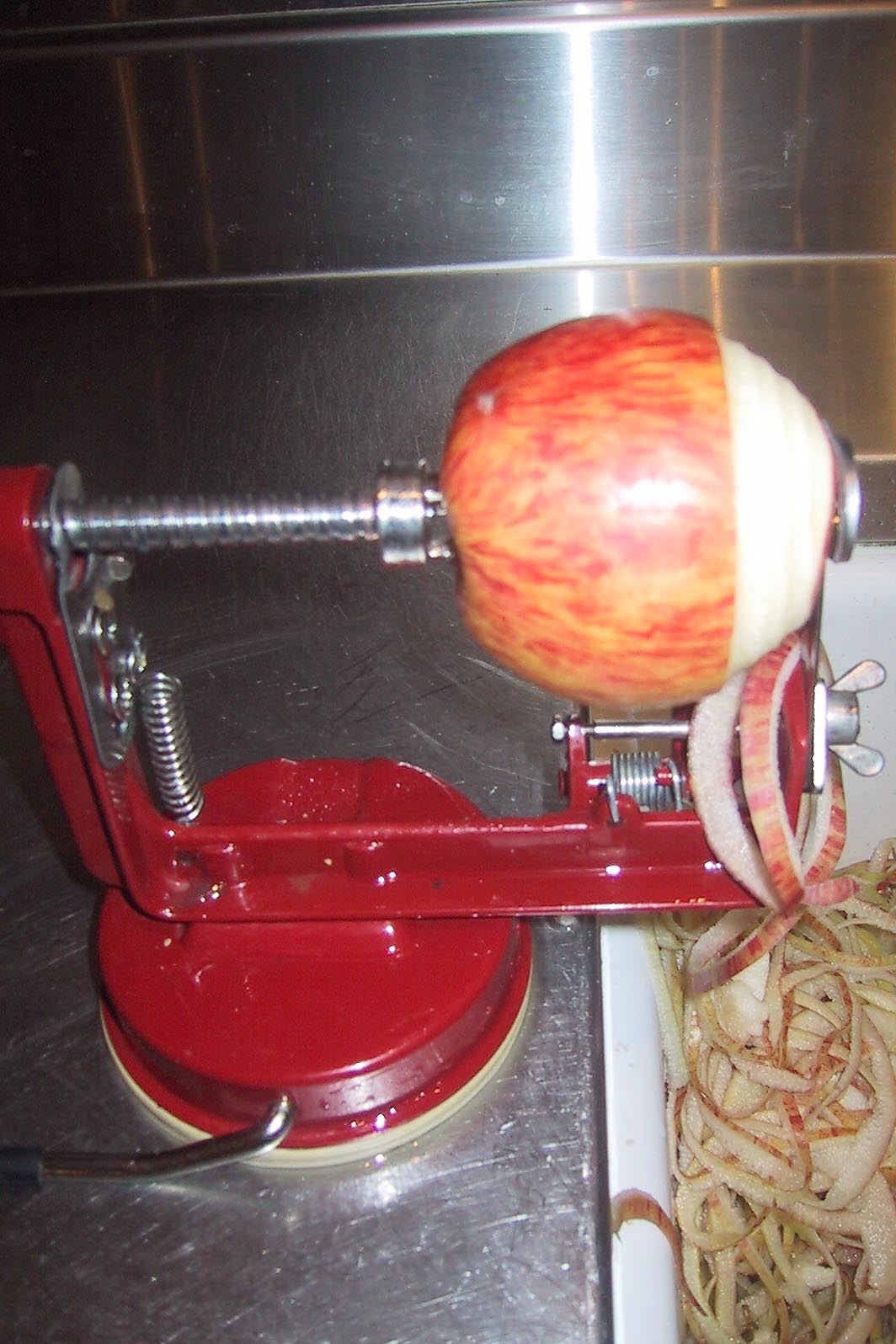

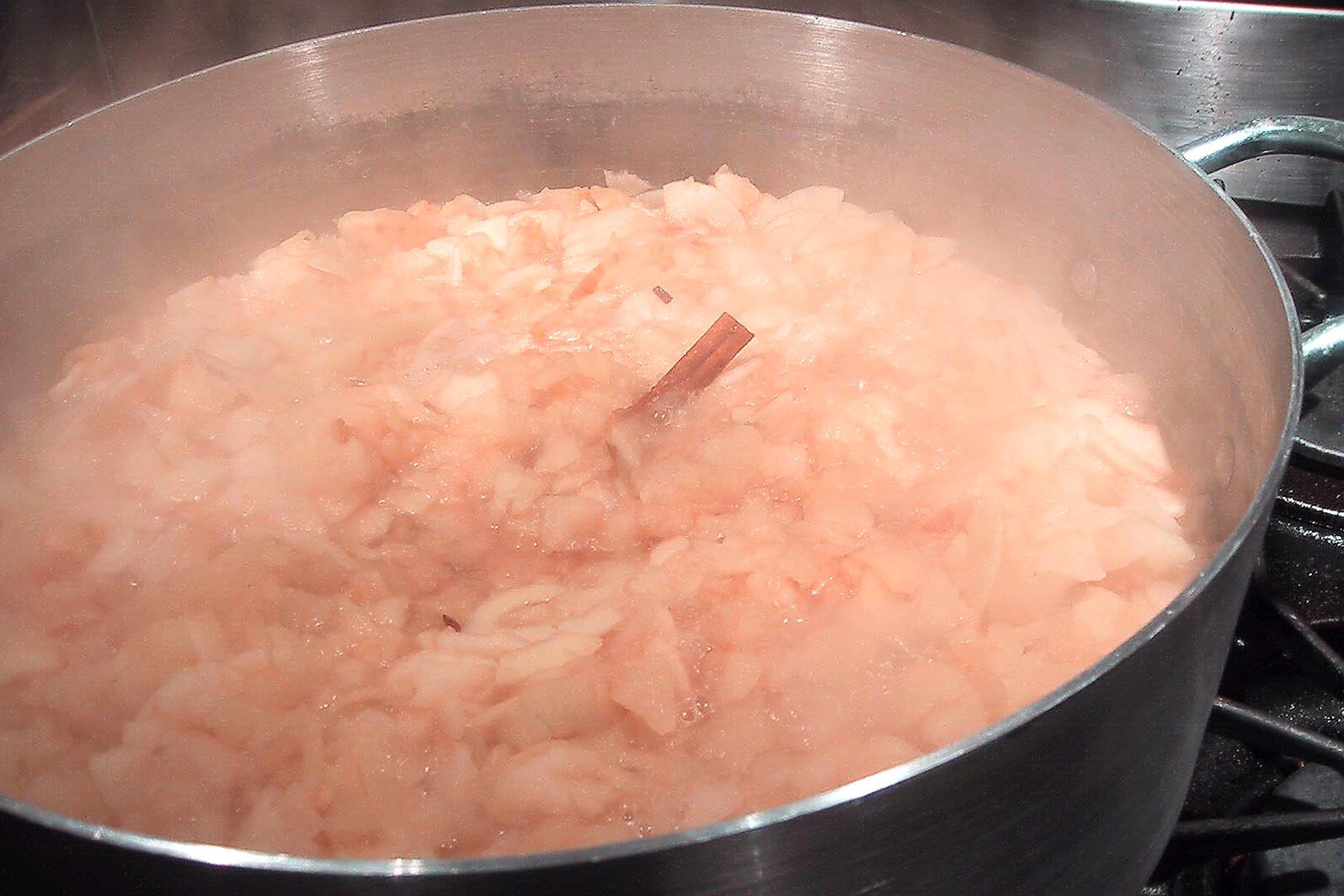
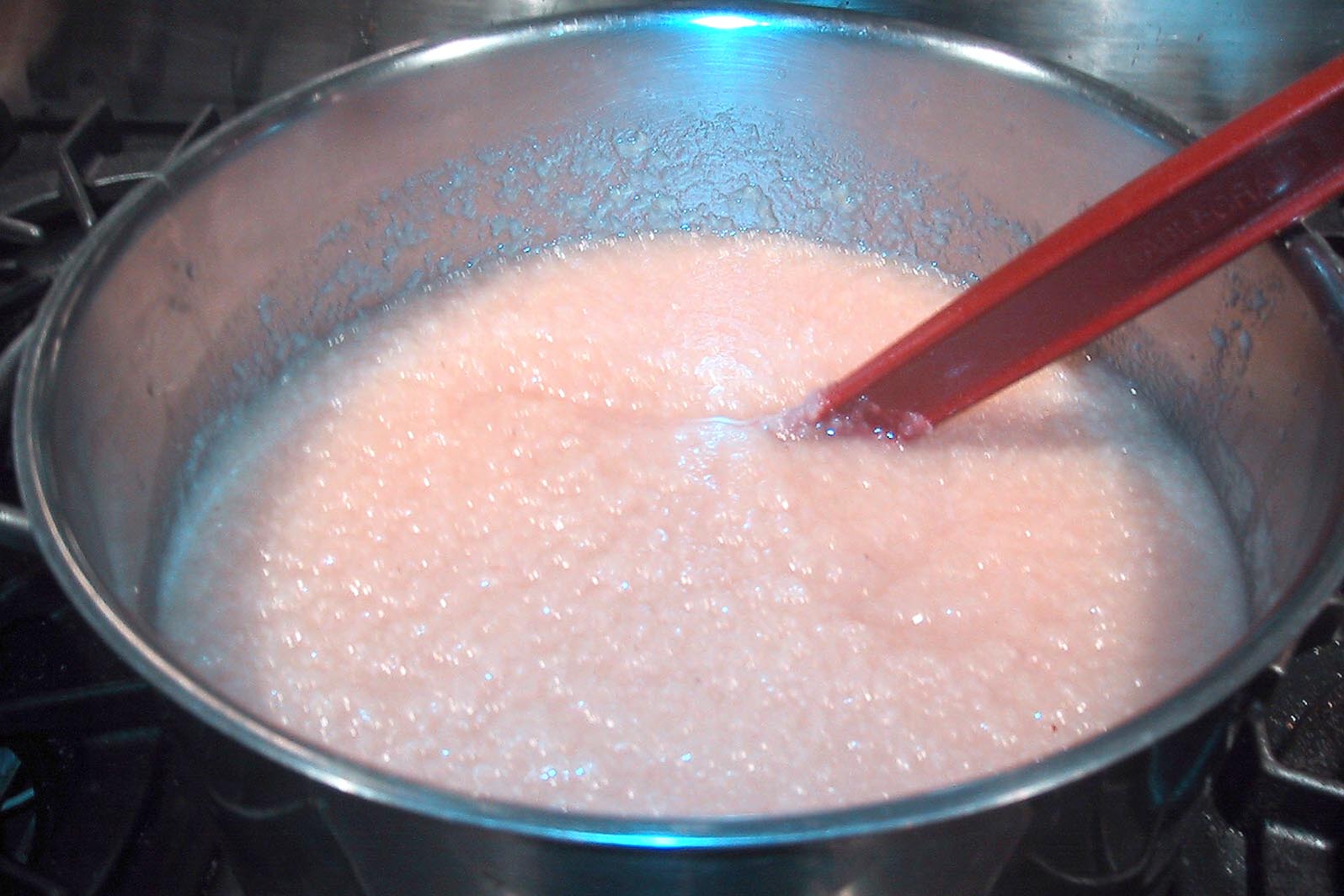
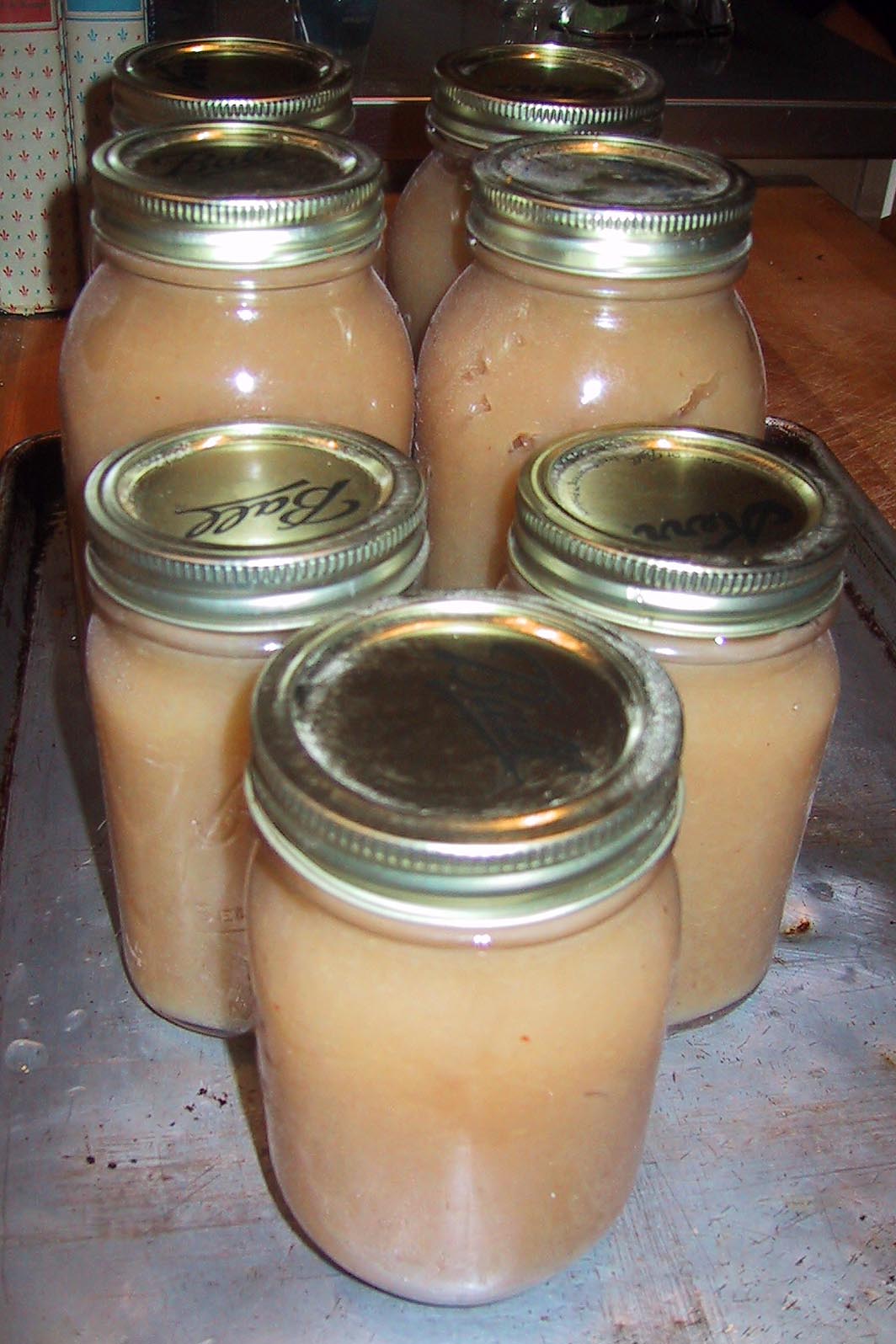

| weddings | sonora | catering | consult | about | contact | blog | events |

Archive for the ‘Family favorites’ CategoryPutting Up Applesauce
One of my favorite fall chores is to take a box of our beautiful Mendocino Gravenstein apples and turn them into jars of applesauce. The Gravenstein is not a good keeping apple, and loses its crisp texture and incredible balance of sweet and tart flavors within a week or so of picking, even when stored under the best conditions. We get these apples here for about 4-6 weeks in mid August through late September, and while we eat as many as we can practically consume in that time period, I find myself craving the flavor in the darker months of winter when the only fruit on the store shelves are citrus and jet-setting bananas.
 One of the fun parts of making applesauce, aside from the tasting, of course, is using the apple peeling machine. This device resembles one of the pieces from the children’s game “Mousetrap,” and appears virtually unchanged from its original version, with the exception of the suction mechanism that allows me to mount it on the stainless steel countertop next to the sink. After setting the various blades and springs, an apple is speared, through the stem end, on the prongs. Turning the crank rotates the apple against the peeling blade while pushing the entire fruit through the coring and cutting blades. At the end of the process, you are left with spiral sliced fruit, a neat core containing stem and seeds, and yards of thin peels resembling a Halloween wig.
 After processing the entire box, the large kettle is full of the sliced apples, and I add several cups of water, some lemon juice to balance the sweetness, and whole nutmegs and stick cinnamon for flavor. The kettle is set over medium heat and stirred frequently to keep the fruit from sticking. The process of reducing the fruit to sauce consistency takes several hours, and the entire kitchen begins to smell reminiscent of apple pie. The only downside is that the open kettle occasionally spits small pieces of fruit in all directions, coating the backsplash and stovetop with sticky bits.
 When the fruit is cooked down, the entire mash is run through the same mill I use for making tomato sauce, removing any remaining skin, seeds or fibrous pulp. The smooth puree is transferred into the smaller kettle, and the rest is added to the cores and skins in the compost bin. The sauce is reheated to reduce and thicken, and tasted for last minute additions of either sugar or lemon. With Gravenstein apples, this is rarely needed, as they seem to have been bred to make the perfect applesauce.
 The canning process is routine by this time; the same steps using in canning the tomato sauce. Care must be taken not to drip the lava-like sauce onto arms or hands while filling the hot jars. A Chinese chef once taught me to coat my hands and forearms with cooking oil before stir-frying in a hot wok; the theory being that the oil would prevent food splashes from sticking to the skin and causing serious burns. I have found that this is also very effective with canning fruit products, and leaves my hands soft as an added bonus.
 At the end of the day, I settle on the couch with a glass of wine, hearing the soft ping of the jars sealing, one after another, as the contents cool. Another seasonal ritual enjoyed, another apple harvest completed, and another year of living in this beautiful and abundant place.
Putting Up Tomatoes
One of my favorite late summer chores is filling the pantry and freezer with menu basics made from summer’s fabulous produce. Every year, I make and freeze pesto, roasted gypsy peppers and chicken stock made from all of the summer’s chickens roasted on my Weber grill. In addition, I buy a case of my favorite San Marzano tomatoes from one of our farmers’ market vendors, turning them into row after row of gleaming jars of deep red tomato sauce. This tradition was passed on to me via my mother and her mother before her, allowing the most fleeting taste of summer, fresh tomatoes, to season many a winter meal. 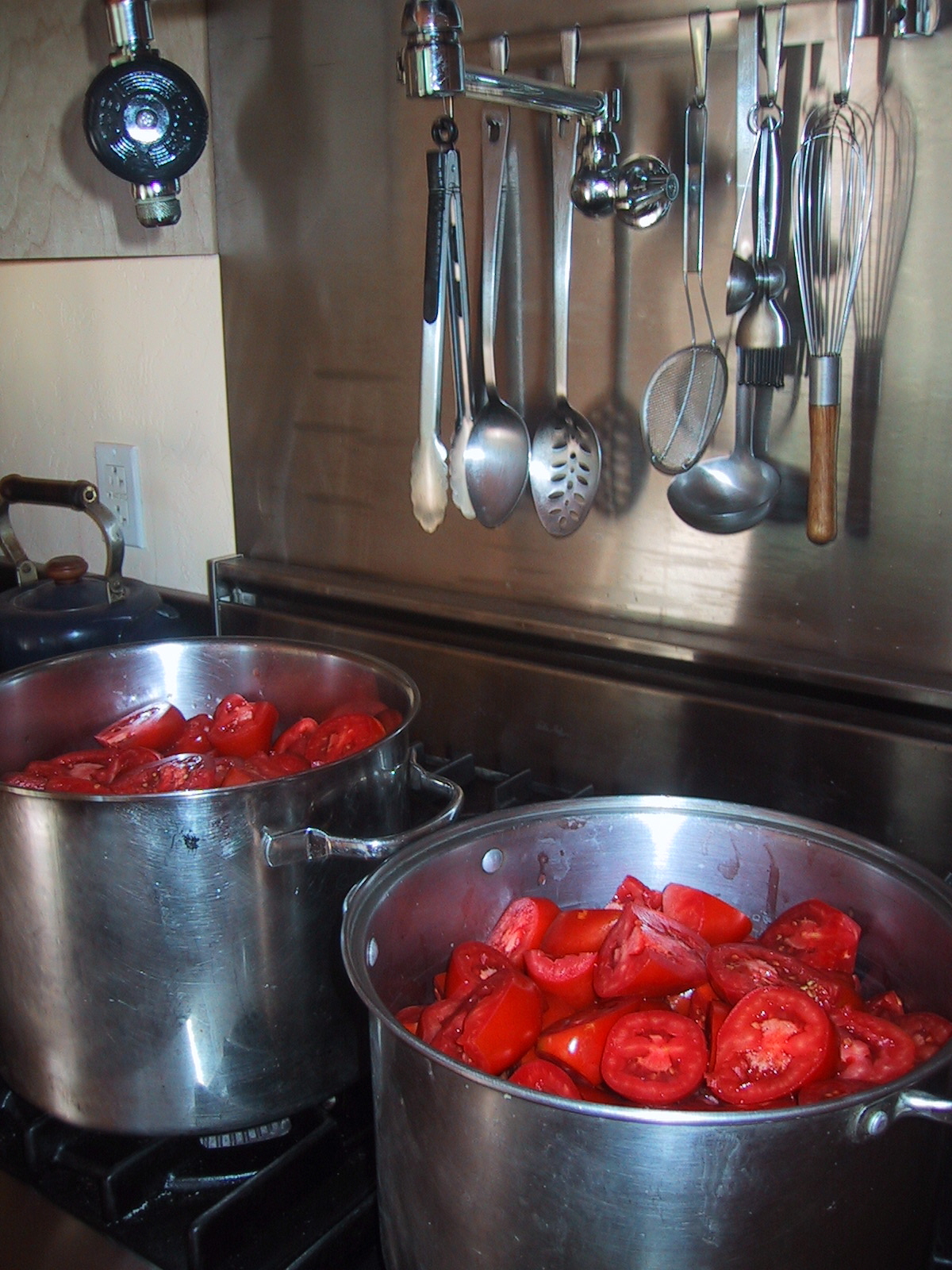 I begin by rinsing and sorting the tomatoes; then chunk them up into walnut sized pieces, trimming away any soft or green spots. This year, they fill two stockpots almost to the top. I toss in some chopped onion, celery and a grated carrot, plus salt, herbs, and two bay leaves in each pot. Set over medium heat, the tomatoes begin to render their juices, hissing and popping with wisps of steam rising up into the vent hood. While I wait for them to boil, I take down and rinse the bright red plastic tomato mill, purchased in Italy. This labor saving device allows me to cook down the tomatoes, skins, seeds and all, extracting every bit of flavor before straining out the unwanted portions.
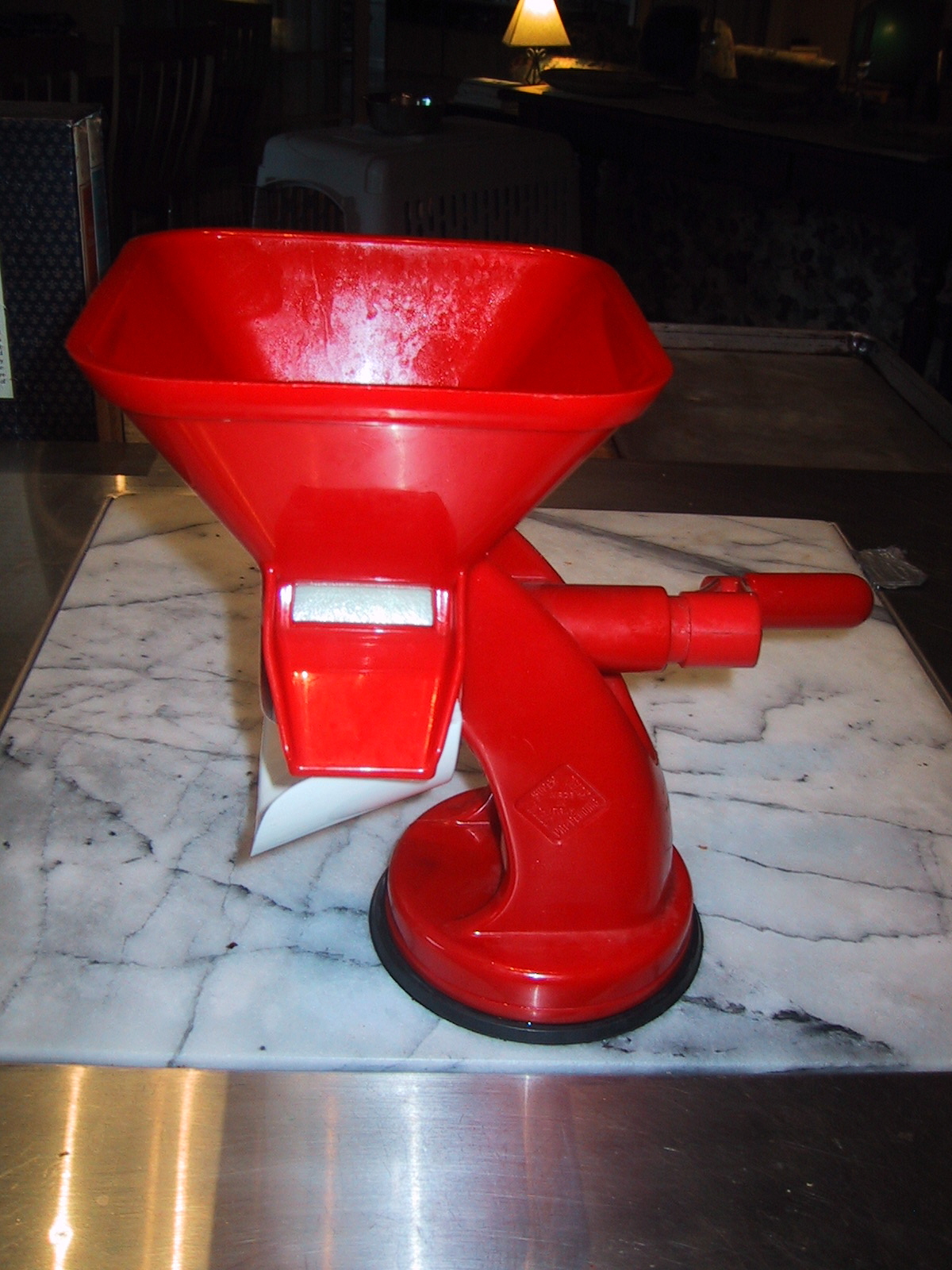 After the tomatoes have cooked down and thickened, and the seasonings melted into the pots, I pull then off the heat and allow them to cool slightly before setting up the mill. I also turn the oven on at 300F, as I am planning on reducing some of the finished sauce to paste, called estratto (extract) in Sicily, or doppio (doubled) in Tuscany.
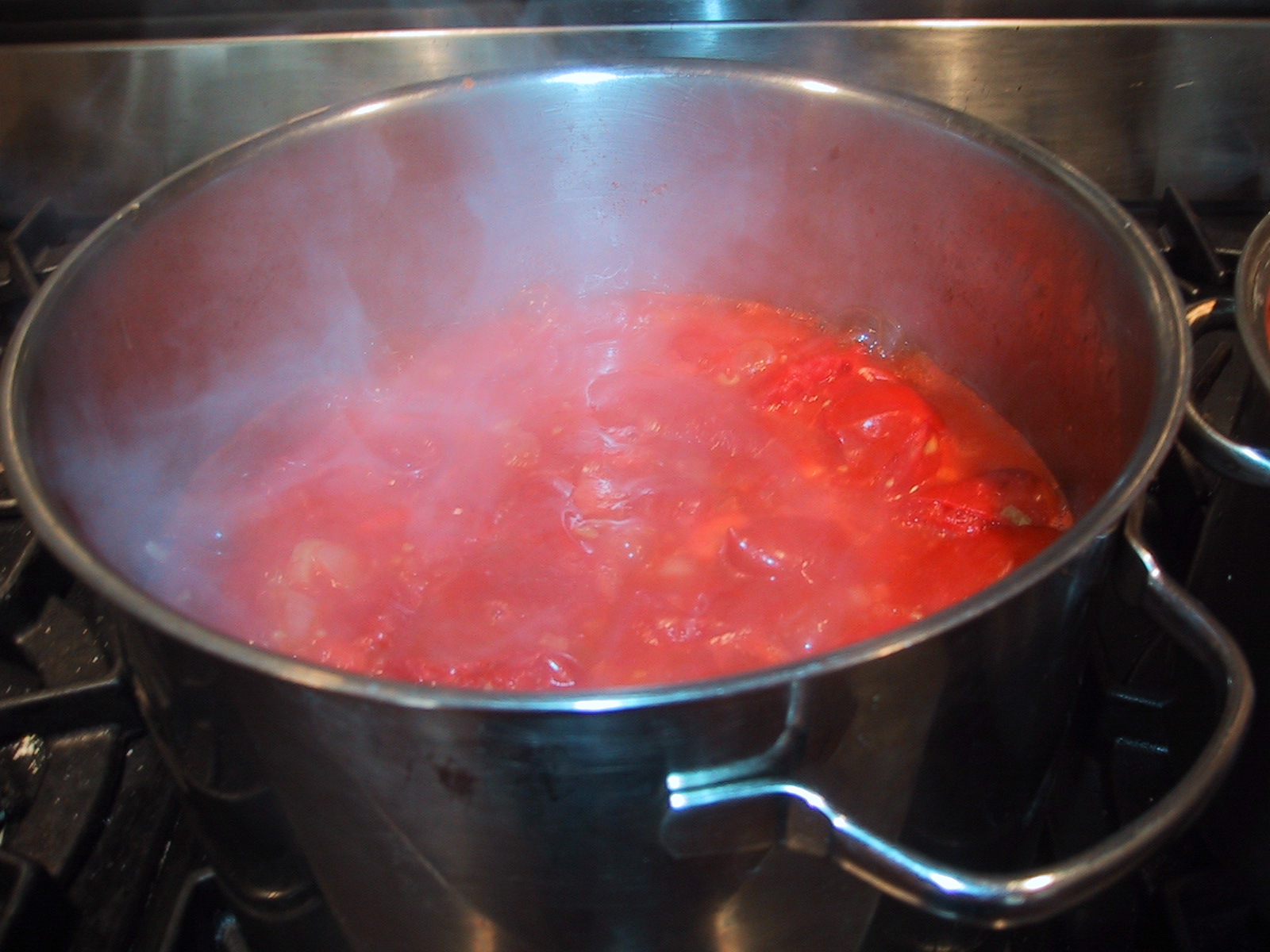 The tomatoes are run through the mill once, producing a ruby red puree. I run the seeds, skins and remaining pulp through one more time, to extract the last bit from the inedible remainder. This fibrous paste is added to the compost bin, eventually returning to the soil from which it came. I reheat the puree and taste for salt while sterilizing the quart and pint mason jars in the dishwasher, using the sanitizer cycle. A new box of lids is opened, and the lids and rings are set to simmer in water on a back burner. The teapot sings merrily as water is boiled and tipped into the hot jars, which are arrayed on a sheet pan opposite the stove. I generously coat another sheet pan with our own olive oil, and carefully ladle about three cups of puree into it, tapping the pan on the counter to evenly spread the sauce. This is popped into the oven to begin its long reduction and caramelization process.
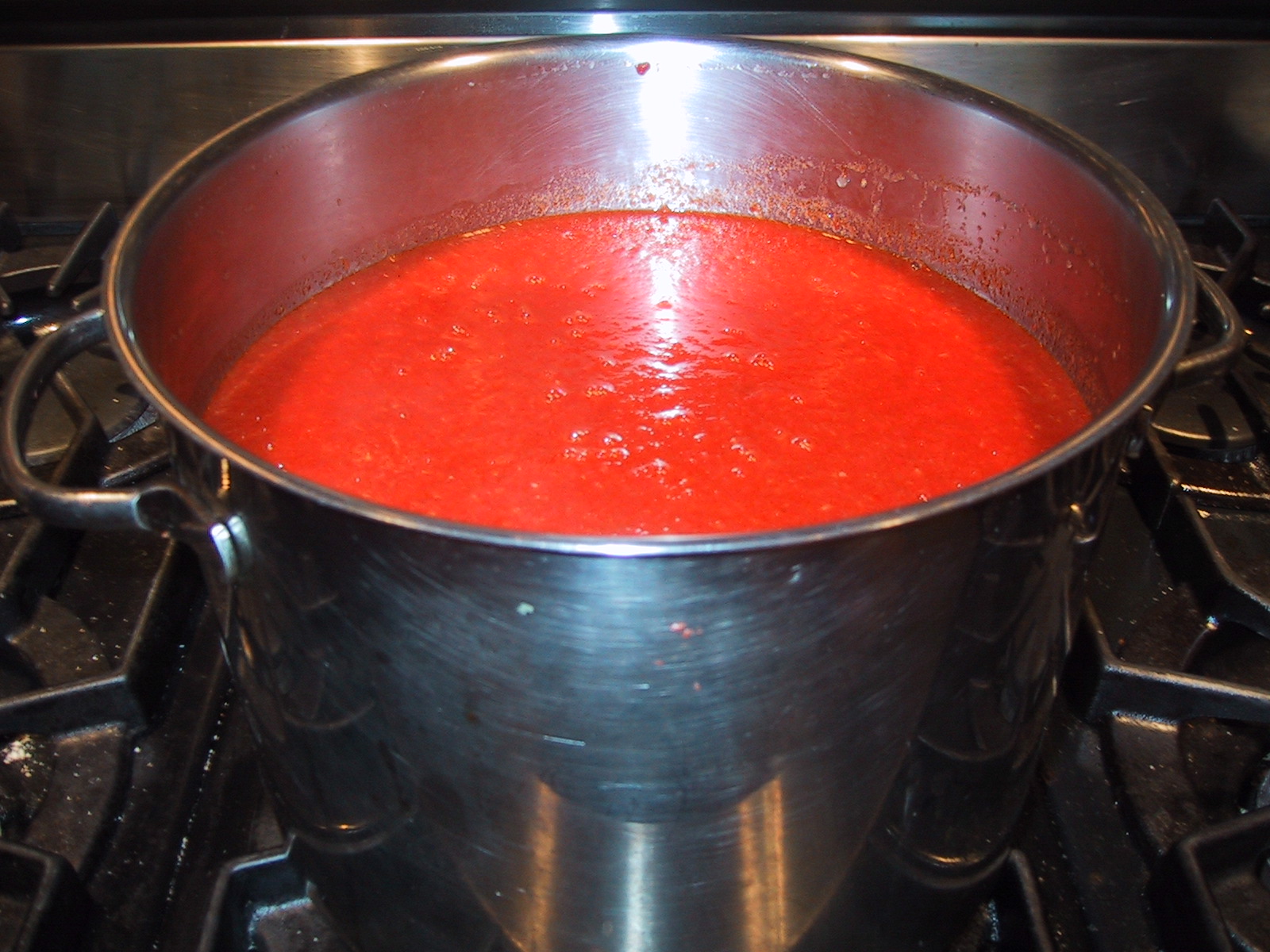 When the sauce is simmering briskly, I take the ladle, and in turn, tip the hot water out of the jars and into the canning kettle, filling each jar with sauce as I go. The hot lids are set carefully down over the mouth of each jar and the rings are screwed on gently to hold them in place. The rest of the boiling water is poured in over the jars to the depth of several inches over the tops of the tallest ones. The kettle is then place over high heat, and timed fifteen minutes from a full boil. When finished, the hot jars are lifted out and place on a towel to cool, the lids sealing with a musical ping. When completely cooled, the rings are screwed tight and the jars are wiped down.
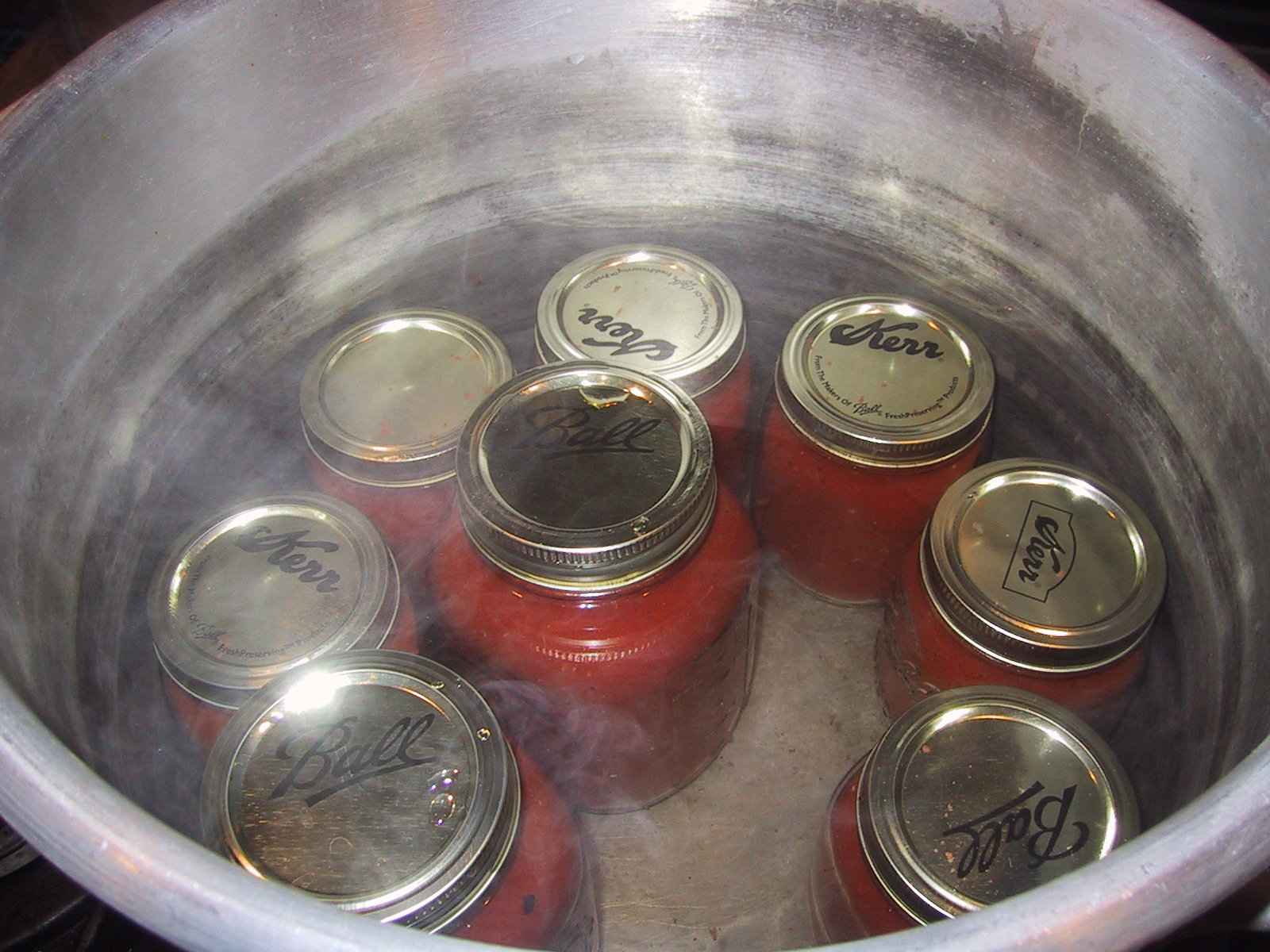 Meanwhile, I have removed the pan of puree from the oven several times, stirring gently to ensure even cooking. After several hours, the oven is turned down to its lowest setting, and the thick paste is left to slowly dry.
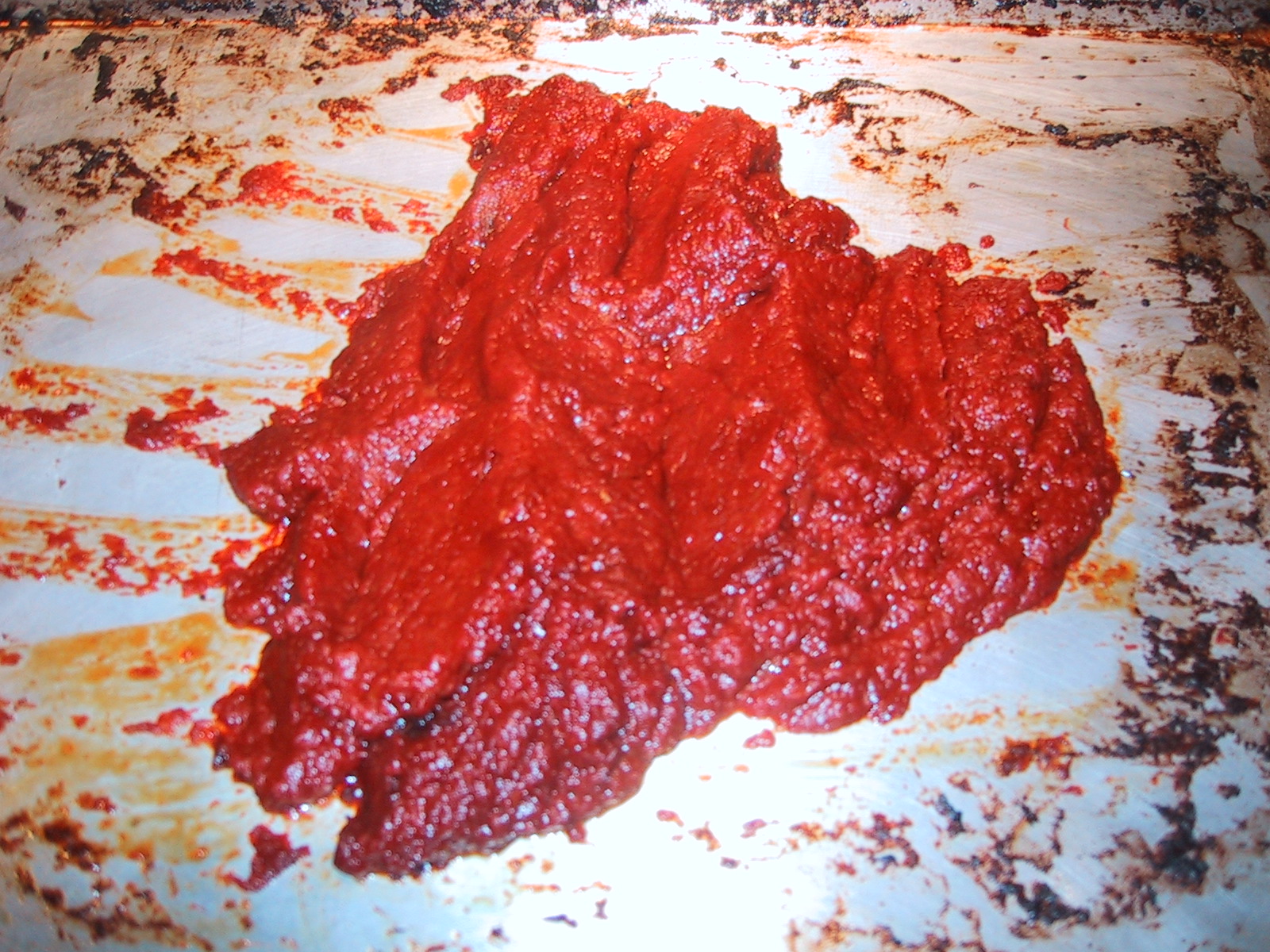 In the morning, I stir the paste and taste it, the sweet fruitiness is backed by a slight undertone of bitterness. It is a deep brick red and sticky as I spoon it into a half pint jar and top it with a layer of our olive oil to keep out the air. Rather than processing, it will be stored in the refrigerator, a new layer of oil added after each use. The essence of tomatoes to be added, a spoonful at a time, to future soups and sauces, without a hint of the metallic flavor that characterizes commercial canned tomato paste.
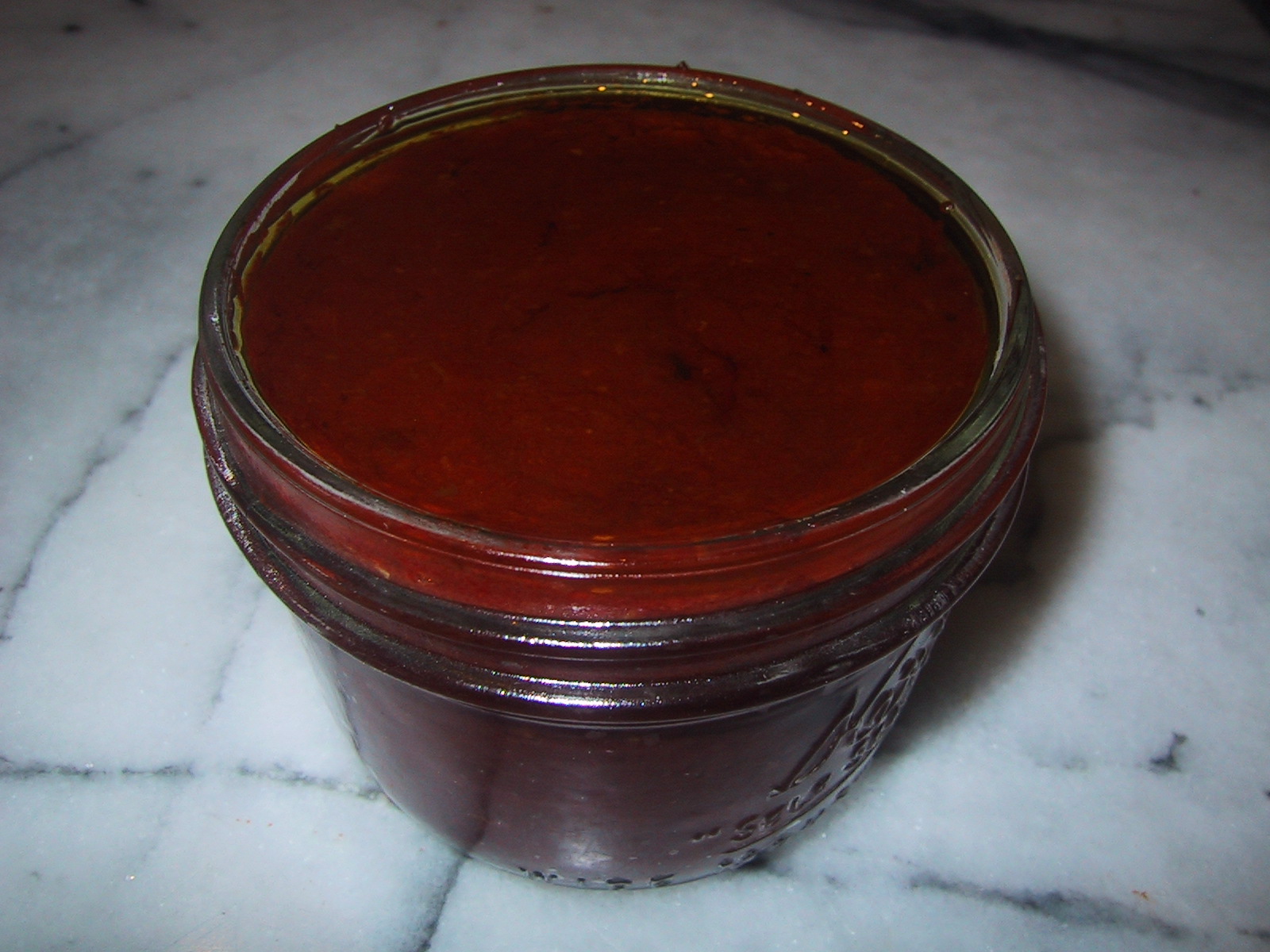 This is hot work, often performed in the heat of our Indian summer, but this year, a lingering and cool fog whose cool breezes seep in through the screen door to the kitchen. The entire house smells of tomatoes, and the full jars seem to smile at me from their shelf. The mill is put away for another year, and we bid summer a fond farewell.
|
|